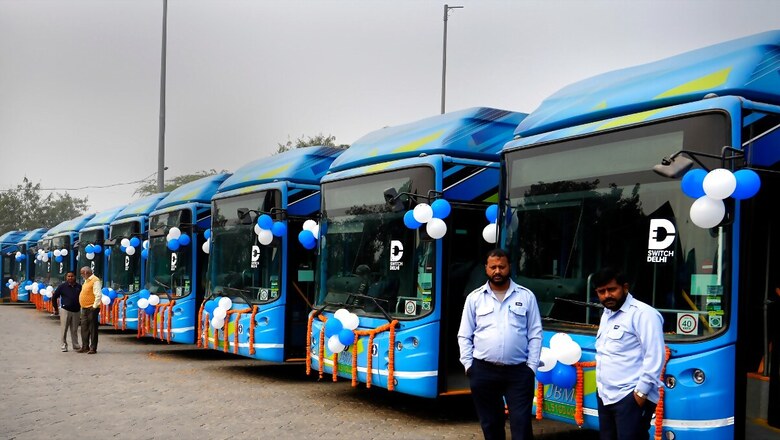
views
Prime Minister Narendra Modi’s plan to roll out a massive number of electric buses across the nation is a landmark project which could change urban mobility and transportation in Indian cities. Cherry on top – the transportation facelift is environmentally sustainable and will help create thousands of formal jobs.
The ‘PM-eBus Sewa’ was given the green-light with the goal of augmenting city bus operations, and will see 10,000 e-buses deployed across 169 cities. The scheme will cover cities with a population of more than 3 lakh, and priority will be given to those that do not have organised bus services. The project will be run on a public-private partnership (PPP) model.
ELECTRIC BUSES COULD TRANSFORM URBAN INDIA
The decision to roll out thousands of electric buses on Indian roads is driven by the goal of transforming public transportation in India. Modi has been an ardent advocate of better transportation systems, as is evident from his push for more metros, high speed trains and airports. In fact, as Gujarat CM he had presided over the first experiment in India to build a dedicated bus corridor in Gandhinagar.
In March, Modi had said: “Urban planning will determine the fate of our cities in Amrit kaal and it is only well-planned cities that will determine the fate of India.” His remarks came after Finance Minister announced a Rs 10,000 crore per year Urban Infrastructure Development Fund for Tier-2 and Tier-3 cities.
While exact data is not available, it is estimated that over 3.2 lakh buses are operated by both public and private players in India. In many states, these primarily-diesel powered buses are often in ramshackle conditions. Clean, efficient, and affordable urban mobility remains a problem for India.
Several cities in India have been operating e-buses for years now. But they have never really taken off due to high costs, lack of infrastructure and maintenance issues. This is possibly the first time that a national effort is being made to switch over to cleaner and sustainable modes of transport.
WHAT TO EXPECT
Electric buses could herald a new era in public transportation across Indian cities. Here are some areas that will see a change once the project takes off:
- Pollution: India is home to some of the most polluted cities in the world. The air many Indians breathe is toxic. The Modi government has set 2070 as the target year when India achieves net zero emissions. Having public transportation that runs on sustainable energy is an important part of achieving that goal. Electric buses operate silently and will contribute to a decrease in noise pollution.
- Urban Infrastructure: The rollout of these buses necessitates the establishment of support infrastructure across cities. This includes strengthening multi-modal interchange facilities, implementing the National Common Mobility Card project, and setting up charging stations.
- EV Manufacturing: The scheme promises to bolster manufacturing of electric vehicles, and in turn fortify job creation. India’s EV market is already expected to reach 17 million units by 2030. The scheme will make supply chains for electric vehicles more resilient. As the government intensifies its efforts, we can anticipate more innovation in the EV domain.
- Job Creation: The scheme will also act as a for job creation and is estimated to generate at least 45,000 to 50,000 direct jobs.
- Cost Efficiency: In the long run, electric buses are more economical than diesel buses. They have fewer moving parts and lesser maintenance costs.
- Energy Independence: Adopting more electric buses can reduce dependence on fossil fuels, thus enhancing energy security.
The rollout of these buses will not be without its own set of challenges. One of the primary challenges would be the establishment of a robust charging infrastructure across hundreds of cities. Electric buses also require different repair infrastructure and components, which will need to be established.
Here’s where private players can help. Tata Motors, for example, has reported a high interest in its electric double decker bus rolled out last year. Engaging with the private sector will lead to innovations and new financial models.
The time to fix urban India’s transport problem is now. By 2040, 270 million more people will live in Indian cities. And they will need better housing, better transport, and more jobs. With the e-Bus Sewa mission, it’s the last two bits that the Modi government is addressing.




















Comments
0 comment